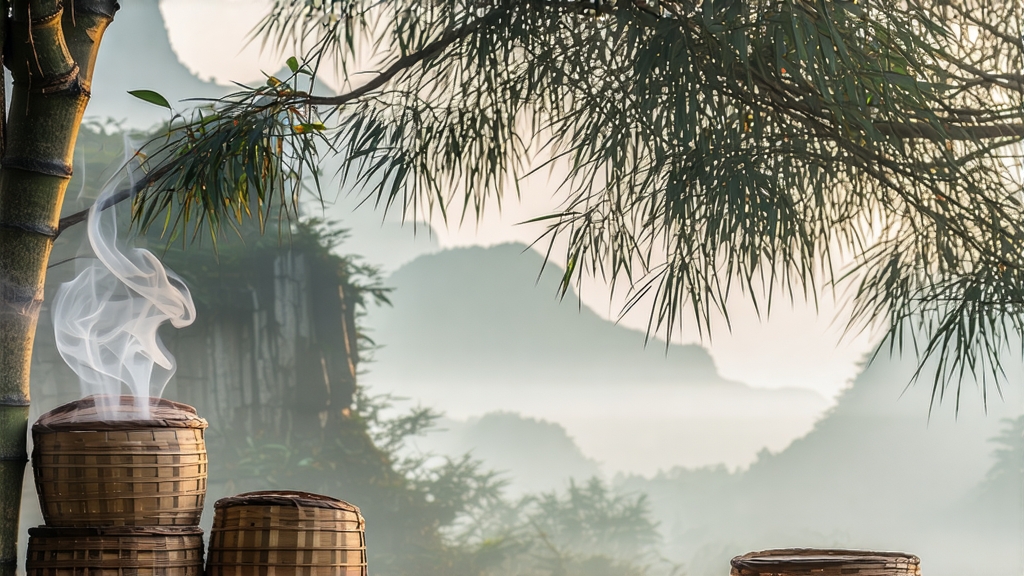
Ask most tea lovers outside China to name a Chinese black tea and the answer is often Keemun or Dian Hong; few realize that the very first black tea ever created—Lapsang Souchong—still survives in the same rugged corner of northern Fujian where it was born four centuries ago. Revered in Europe as “bohea,” maligned in modern guidebooks as “too smoky,” and quietly adored by specialty tea hunters for its deeper, subtler incarnations, Lapsang Souchong is both a living fossil and a shape-shifter. This article invites you to look beyond the campfire clichés and meet the tea that launched the global black-tea trade, learning how terroir, wood, fire, and time conspire in a single leaf.
-
Historical Footprints from the Wuyi Cliffs
The story begins around 1568 in the Wuyi Mountains, a UNESCO World Heritage site whose vertical cliffs, mineral-rich soils, and ever-present mists create a natural greenhouse for slow-growing tea bushes. Local legend blames a passing army that commandeered a Qing-era tea factory during harvest season; to dry the leaves quickly before the soldiers returned, workers spread them over pine fires. The accidental smoke infusion proved popular with Dutch traders in Xiamen, who bought every “bohea” leaf they could load onto East-Indiamen bound for Amsterdam and London. By the early 1600s Lapsang Souchong had become the most expensive tea at the English court, priced higher than silver and drunk sweetened from tiny porcelain cups by Charles II and his queen. -
What “Souchong” Actually Means
Chinese tea nomenclature is hierarchical. “Xiao zhong” (rendered “souchong” by Amoy traders) refers to the fourth and fifth leaves down the stem—broad, mature, and less delicate than the bud and first two leaves used for green or white tea. These tougher leaves tolerate heavy withering and smoking without collapsing, giving the finished tea its characteristic twisty, jet-black appearance. The prefix “Lapsang” is a European corruption of “Lapu Mountain,” the original producing area inside Tongmu Guan, a protected enclave now closed to unregistered visitors. -
Micro-Terroirs Inside Tongmu Guan
Even within 20 km² the tea changes flavor. Leaves picked from 800-year-old seed-propagated bushes growing out of weathered tuff rock yield a naturally sweet, longan-fruit note that needs almost no smoke. Gardens at lower elevation on red sandstone produce sturdier, more astringent leaf that welcomes a heavier pine kiss. Spring plucks (mid-April) give floral lift; summer leaf (June) offers malt and molasses; autumn pickings (late September) are lighter in body but higher in fragrance. Knowing the harvest date is therefore as important as knowing the cultivar—an idea foreign to consumers used to year-round blends. -
Craft: From Fresh Leaf to Black Twig
a) Outdoor Withering: baskets of souchong leaves are laid on bamboo racks set up in the cool mountain night for 8–10 hours, allowing moisture to drop from 75 % to roughly 55 %.
b) Rolling: once the leaves feel limp like soft leather they are rolled for 30 minutes in a cast-iron trough with a rocking arm, bruising cells to initiate oxidation.
c) Oxidation: the leaf piles rest under wet cloths in a pine-wood room kept at 24 °C and 80 % humidity. Color shifts from jade to copper over two hours, releasing a heady aroma of honey and ripe apricot.
d) Pan-firing: quick 220 °C heat for seven minutes deactivates enzymes and fixes the copper tone.
e) Smoking or “Song Xun”: the critical step that divides purists. For traditional Lapsang, the hot leaves are placed on upper racks of a three-tier brick oven while fresh pinus taiwanensis and local Chinese red pine smolder below. The smoke must be cool (35–40 °C) and resinous; too hot and the leaf tastes bitter, too cool and the aroma fails to stick. One cycle lasts 30 minutes and is repeated up to six times over two days. In contrast, “unsmoked” or “zheng shan xiao zhong” bypasses